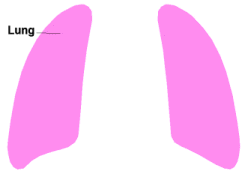|
Contraindications |
|
|
 |
Obviously since IS requires patient participation it cannot be performed on unconscious patients, or those otherwise unable to cooperate. Nor should IS be attempted on patients who are unwilling or unable to follow directions (like very young children). Finally, IS is only effective in patients who can generate minimally adequate inspiration. If this is not possible, other more suitable treatment options like IPPB must be considered.
Hazards and Complications
Given its normal physiologic basis, incentive spirometry presents few major hazards and complications, including:
- Hyperventilation and respiratory alkalosis
- Discomfort secondary to inadequate pain control
- Pulmonary barotrauma
- Hypoxemia (with interruption of therapy)
- Exacerbation of bronchospasm
- Fatigue
When the patient performs IS too rapidly, acute respiratory alkalosis can occur, with dizziness being the most frequently reported side effect. This problem is easily corrected with repeat instruction and close follow-up.
Normally IS does not cause any cardiovascular side effects since the maneuver mimics physiologic breathing, and no positive airway pressure is employed. An exception occurs when maximal inspiration is maintained against a closed glottis, and the abdominal muscles are contracted. This Valsalva-like maneuver increases pleural pressures and can cause a vagal response that decreases the cardiac rate. Proper patient instruction can correct or prevent this problem.
Discomfort secondary to pain is usually the result of inadequate pain control. This problem can be rectified by assuring appropriate analgesia. In addition, pain medication should be coordinated with IS activity.
When the elastic limits of lung tissue are exceeded, pulmonary barotrauma can occur. This occurs when a high transpulmonary pressure gradients causes gross overdistension (too high a volume at too high a pressure). Although IS does increase the transpulmonary pressure gradient, the volume and pressure changes that occur are generally not enough to cause gross overdistension in otherwise healthy lungs. The exception is lung tissue that is already overdistended, as in emphysema. In these patients, pulmonary barotrauma is a real possibility that the RCP must always be aware of.
Incentive spirometry per se never causes hypoxemia. Hypoxemia only occurs when 02 therapy via mask is interrupted to perform IS. If hypoxemia is likely, the O2 mask should be changed to a nasal cannula at the proper flow for the duration of the IS treatment. IS rarely causes bronchospasm, but may exacerbate a pre-existing condition.
Repetitive IS maneuvers can cause fatigue, especially in patients with pre-existing respiratory muscle weakness. Fatigue may also be due to the high work of breathing imposed on the patient by some IS devices. Signs of fatigue in spontaneously breathing patients include tachypnea. and paradoxical abdominal-chest movement. Fatigue may also be recognized by a progressive drop in IS volumes during a therapy session. Should fatigue occur, the RCP should adjust the treatment accordingly.